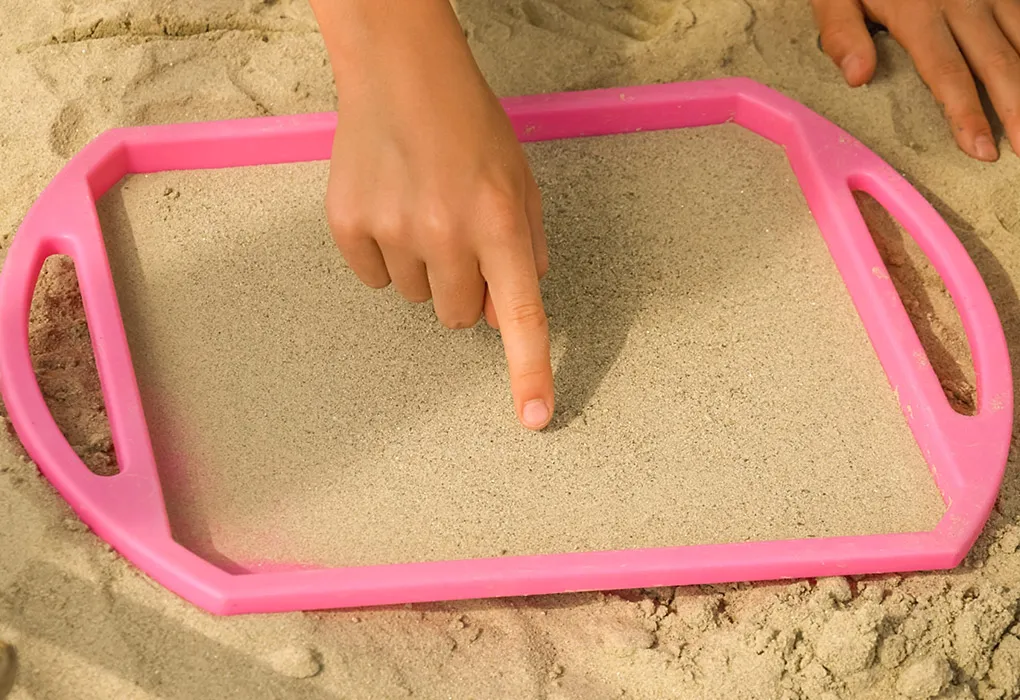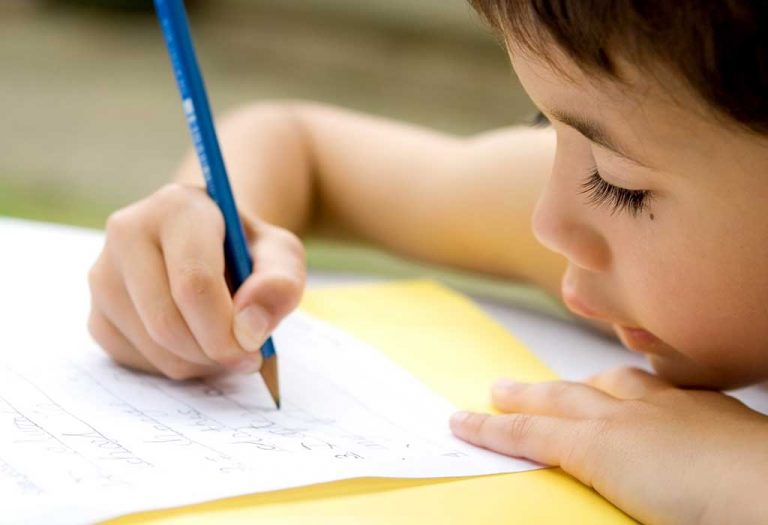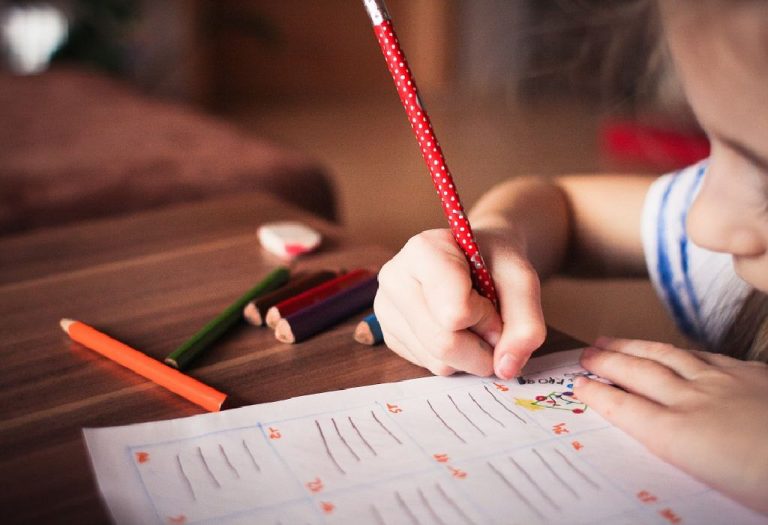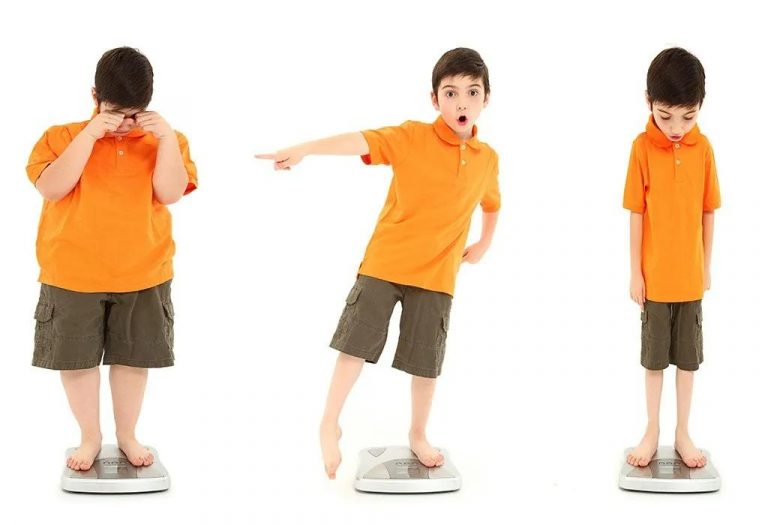Dysgraphia: Types, Causes, Symptoms, and Treatment
While there are some children who are more gifted at writing, most are average and able to write their thoughts in a coherent manner. But then there are those who seem to have a lot of difficulty in doing even that. These children may be suffering from something known as dysgraphia. Dysgraphia in children is a learning disability that affects writing abilities, making tasks like handwriting, spelling, and organizing thoughts on paper extremely challenging. Unlike typical struggles with writing, dysgraphia is a neurological condition that persists despite practice and effort. Early identification and intervention can significantly help. Recognizing the signs is crucial for providing the right support. With proper assistance, children with dysgraphia can improve their skills and gain confidence in their academic journey.
What Is Dysgraphia?
Here’s the Dysgraphia meaning. Dysgraphia can be described as a learning disability in which children have difficulty in writing and sometimes with other fine motor skills. Dysgraphia and ADHD often go together, but it can also be a standalone disability. Dysgraphia is also called “Specific Learning Disorder with Impairment in Writing” (1).
How Common Is Dysgraphia in Children?
Research suggests that dysgraphia affects approximately 10-30% of school-aged children, though exact numbers vary due to underdiagnosis or misdiagnosis as general learning difficulties (2).
Types of Dysgraphia in Children
There are different types of dysgraphia, and most children have more than one type of it. Here are five types of dysgraphia:
1. Motor Dysgraphia
In this type of dysgraphia, handwriting is often illegible as the child is unable to hold a pencil correctly.
2. Dyslexic Dysgraphia
Children with dysgraphia dyslexia are often able to copy decently, but their spontaneous writing is quite illegible, and their spellings are not good.
3. Lexical Dysgraphia
This type is quite rare in children and is seen when the child can spell, but they are more reliant on the standard sound-to-letter patterns.
4. Spatial Dysgraphia
If a child does not understand the concept of space and has trouble writing on lines and spacing between words, then he or she is said to have spatial dysgraphia. Their spontaneous written work and copied work is illegible, but their spelling is usually normal.
5. Phonological Dyslexia
Phonological Dysgraphia is said to be the inability to spell unfamiliar words and phonetically irregular words. Children with this type of dysgraphia are unable to remember phonemes and use them correctly in writing.
Causes of Dysgraphia
It is important to understand what causes dysgraphia in children so that it is possible to work with them and help them. Here are some causes for childhood dysgraphia:
- Underdeveloped fine motor skills
- Inability to properly visually process letters and words
- Brain damage
- Multiple mental images
- Inadequate instruction
Dysgraphia Symptoms in Children
Look out for these Dysgraphia signs if you suspect your child may have dysgraphia. Here are the most important dysgraphia symptoms (3):
- Inability to get their thoughts down on paper
- Messy or illegible handwriting
- An awkward and tight grip on the pencil and awkward body position
- Has trouble spacing between words and forming the shapes of the letters
- Unable to pay proper attention
- Has some trouble when trying to organize the words from left to right
- Has difficulty staying within the margins
- Has trouble with other fine motor skills such as holding a fork, tying shoelaces or fastening buttons
- Inability to spell correctly and sometimes mixes upper case and lower case letters
- Unable to hold the pencil properly or use scissors the correct way
- Avoids writing
- Writes incomplete sentences
Understanding dysgraphia characteristics – like inconsistent handwriting, difficulty spacing words, and slow writing speed – helps parents and teachers identify this learning challenge early.
Dysgraphia Versus Dyslexia
Both dysgraphia and dyslexia are brain-based conditions that affect language skills differently. Writing requires multiple brain processes to work together – like remembering letter shapes, organizing ideas, and controlling hand movements. When any of these don’t function smoothly, it can result in dysgraphia.
Dyslexia, on the other hand, makes it difficult to recognize and process written words (4). Children might see letters clearly but struggle to connect them to sounds or meanings.
While some children experience only one condition, many face challenges with both writing (dysgraphia) and reading (dyslexia).
When Does Dysgraphia Start Showing Its Symptoms?
As dysgraphia is related to the inability to write properly, most parents and teachers may notice the signs first beginning to appear when the child in question has to start writing assignments in school. While all children begin with inconsistency in their writing skills, they soon get the hang of it. If your child remains unable to get used to writing and shows the above symptoms for longer than the normal learning curve most children require, your child may be showing signs of dysgraphia.
How Is Dysgraphia Diagnosed?
If you believe that your child is displaying symptoms of dysgraphia, consider seeking the advice of a psychologist or a neurologist as they are qualified to diagnose dysgraphia. The doctor will require some background information on the child’s family history, developmental milestones, and some academic history that involves writing samples of your child. Your child will also have to go through a dysgraphia test which will include some activities in which the evaluator can assess his fine motor skills, intelligence and academic achievement. Letter formation and other types of motor-related dysgraphia can be diagnosed at the age of six, but most wait until the child has reached about nine years of age before giving a proper diagnosis, as the ‘Test of Written Language’ can only be done by children who are more used to complex forms of writing.
Dysgraphia Treatment for Kids
Dysgraphia has no cure, and so, the treatment will vary from child to child. It will also vary if the child has any other type of learning disability or any kind of health problems. Here are some ways in which dysgraphia in kids can be treated:
- There are no specific dysgraphia writing exercises, but there are certain teaching techniques that can help. Since many children with dysgraphia also have dyslexia, they may need to work on basic reading skills, like decoding, to be able to write better. It is especially important in helping children with their spelling. For this, syllable patterns, letter-sound relationships, and relations between meanings and letter groupings will need to be explained to them well.
- Those who struggle with their motor skills required to write can undergo occupational therapy. Here, therapists work on the strength of the hand and the fine motor coordination a child will need to be able to write. They also help children learn how to position their arm correctly and how to hold their bodies.
- In order to help kids with other problems related to writing, educational therapy will work wonders. Here, they will learn how to work around their weaknesses with writing and be able to help children with setting reasonable and achievable goals for writing, and will also be able to teach them how to track their progress with visual tools. This helps children tackle writing assignments with as little frustration as possible.
What Can Parents Do to Improve Their Child’s Writing and Alleviate Their Pain?
Writing can be so emotionally stressful for children with dysgraphia, which is why they try to avoid it as much as they can. If you make the time to practice a few things with your child though, you can help him remove a lot of unnecessary pain from his attempts at writing. Here’s how to help a child with dysgraphia (5):
1. Change the Paper
Try replacing the lined paper with graph paper so that each letter gets its own block or space and teach him to leave one empty block between the words.
2. Change the Tool
Children with dysgraphia are not naturally able to hold a pen or pencil lightly so if you give them something delicate to work with, it will encourage them to use a light grip. You can get your child a feathered quill and ink to make things more fun, or if that is not available, you can always encourage him to write with chalk on a chalkboard or slate. There are even some dysgraphia pencil grips that are made to help your child get a better grip on his pencil.
3. Teach Typing
Typing is so much easier for children with dysgraphia than writing is, so teaching him to type will remove a lot of stress and allow him to express his thoughts in written form much better.
4. Build Muscle Memory
For children with dysgraphia, fine motor skills can be a problem, so have your child use the three fingers used for writing to walk a chopstick up and down. Make it fun for him by turning this into a game and rewarding him for a job well done.
5. Multisensory Exercises
Have your child play around in either sand or paint and ask him to form words using his fingers. Tactile learners will be able to form memories of the letters by feeling them.
6. Speak and Write
Encourage your child to say the word out loud first and then write it down. This will help him focus and keep track of his efforts as it engages different parts of the brain.
7. Dictation
Children with good oral skills can be given a voice recorder and encouraged to record their thoughts first and then write it down while listening to it. This will make things easier for them as they will not need to focus on forming sentences or their grammar, and will be able to focus solely on their word formation.
8. Letter Formation Drills
A common problem that children with dysgraphia have is starting words from bottom up. Teach them to form letters from the top rather than the bottom consistently. The letters do not need to be perfect, but they should be consistent.
When to Worry
If your little one tries his best but still does not seem able to get the hang of writing and is becoming anxious at the thought of any kind of writing activity, you may want to look into asking for an assessment and see if your child has dysgraphia. Some children may need a bit more help than what you can give them at home. A professional will be able to take therapy further than you can and will be able to identify the exact underlying cause of the problem.
FAQs
1. Can Dysgraphia affect math skills even if a child is good with numbers?
Yes, Dysgraphia can make math difficult even for children who understand numbers well. The problem isn’t with doing calculations in their head, but with writing numbers neatly, keeping them in straight lines, or showing their work on paper. They might know the right answer but have trouble writing it down correctly.
2. Do left-handed children show different dysgraphia symptoms?
Left-handed children with Dysgraphia often have extra challenges. They might smudge their writing as their hand moves across the page, or find it harder to see what they’re writing because their hand covers it. Some left-handed kids develop unusual pencil grips to compensate, which can make writing even more tiring.
3. Why might a child with Dysgraphia resist using accommodations?
Children often refuse help because they don’t want to feel different from classmates. They might be embarrassed about using special tools or extra time, or worry others will think they’re not smart. Some kids would rather struggle than admit they need help, especially as they get older.
4. Can Dysgraphia symptoms temporarily worsen during growth spurts?
Yes, many parents notice writing gets worse during growth spurts. As children’s bodies grow quickly, their brains need time to adjust to their changing muscles and longer limbs. This can make handwriting messier or slower for a while until their coordination catches up with their new size.
Common dysgraphia examples include illegible handwriting, inconsistent letter sizes, and extreme difficulty with spelling despite normal intelligence. Though it can be frustrating for both child and parent, it is important not to allow your child to lose confidence in himself. Do not be afraid to ask for help if your attempts to help your child improve at home do not work, because your child’s future depends on him being able to have enough confidence in his abilities. Together, you can overcome this issue.
References/Resources:
1. International Dyslexia Association – Understanding Dysgraphia
3. Cleveland Clinic – Dysgraphia
5. Tourette Association of America – Dysgraphia
Also Read:
Delayed Speech in Kids
Hyperlexia in Children
Developmental Delay in Kids
Learning Disabilities in Children
Was This Article Helpful?
Parenting is a huge responsibility, for you as a caregiver, but also for us as a parenting content platform. We understand that and take our responsibility of creating credible content seriously. FirstCry Parenting articles are written and published only after extensive research using factually sound references to deliver quality content that is accurate, validated by experts, and completely reliable. To understand how we go about creating content that is credible, read our editorial policy here.

























